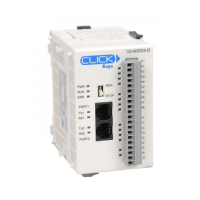Troubleshooting Electrical Noise Problems
Electrical Noise Problems
Noise is one of the most difficult problems to diagnose. Electrical noise can enter a system in
many different ways and can fall into one of two categories, conducted noise or radiated noise.
It may be difficult to determine how the noise is entering the system, but the corrective actions
are similar for both types of noise problems.
• Conducted noise is electrical interference introduced into the system
by way of an attached wire, panel connection, etc. The interference
may enter through an I/O circuit, a power supply connection, the
communication ground connection, or the chassis ground connection.
• Radiated noise is electrical interference introduced into the system without a
direct electrical connection, much in the same manner as radio waves.
Reducing Electrical Noise
Although electrical noise cannot be completely eliminated, it can be reduced to a level that will
not adversely affect the system.
• Most noise problems result from improper grounding of the system. A good
earth ground can be the single most effective way to correct noise problems. If
a ground is not available, install a ground rod as close to the system as possible.
Ensure that all ground wires are single point grounds, and are not daisy chained
from one device to another. Ground other metal enclosures near the system. A
loose wire can act as a large antenna, introducing noise into the system; so,
tighten all connections in your system. Loose ground wires are more susceptible
to noise than the other wires in your system. Review Chapter 3: Installation
and Wiring, if you have questions regarding how to ground your system.
• Electrical noise can enter the system through the power source for the PLC and
I/O circuits. Installing an isolation transformer for all AC sources can correct this
problem. DC sources should be well-grounded, good quality power supplies.
• Separate input wiring from output wiring. Never run low-
voltage I/O wiring close to high voltage wiring.
CLICK PLC Hardware User Manual, 6th Edition, Rev. F – C0-USER-M
6–10
Chapter 6: Troubleshooting

